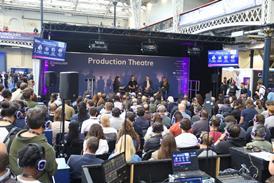Since the turn of the millennium we've seen digital convergence in our broadcast world gather pace.
First off the block was the basic Tape to Tapeless format change; from the ability to carry out basic non-linear editing to complete Digital ENG and now direct remote ‘downloads' into the News control room.
We now see all manner of IT-based systems aimed at driving automated efficiencies in broadcasting, from creation to distribution through scheduling to the complex automated playout of numerous ‘channels' to multiple platforms.
Next Phase
A new convergence phase we are seeing now in broadcast is the adoption of serious software-driven ‘workflow' systems being put in place to tie-up back-office processes with content-specific broadcast operations. There are already examples of systems such as SAP being used to manage and ‘police' content so that it can be monetised like any other company asset.
There are obviously benefits to all this, but this also introduces a need for new skills to make sure these types of projects do actually deliver the benefits they are intended to, and are on time and within budget!
The primary problem here is the old IT chestnut: Is the software programme you've chosen truly an ‘out of the box' solution or to make it work in YOUR organisation, will there be a need for significant ‘code' customisation?
Vendor machines
Nearly all software workflow vendors have many years development under their belts of vertical industry toolsets aimed at targeted sectors such as financial services, utility provision, retail etc.
These map-out the processes needed for computer based operations to be able to service that particular market and therefore usually need little customisation to work in these specific sectors.
BUT The big players like SAP, Peoplesoft and JD Edwards are yet to build a flexible broadcast-market specific system.
So these particular integrations demand a great deal of customisation to suit how a broadcaster needs such systems to perform, without having to organisationally re-design their entire operations to suit how the software ‘generic' workflow is used.
An IT software development problem
Here lies the real IT problem on how far digital convergence could go; many technical developments are now under way that attempt to ‘connect' broadcast operations together with automated workflow to gain major operating efficiencies and automation of reporting on these operations.
These Enterprise Resource Planning (ERP) type software systems are being built to enable companies to be measured and judged automatically against Key Performance Indicators (KPIs) set in Service Level Agreements (SLAs).
However getting this to all work in a broadcast environment presents serious challenges in connecting, collecting, analysing and dashboarding the data needed to achieve this.
If digital convergence in a broadcast arena is going to encompass board-level KPI dashboarding for corporate governance, SLA-Driven ‘playout' contracts, automated Targeted Advertising etc., then the broadcast industry is going to have to take on new skills to manage the timely execution of software customisation and development.
It's never out of the box
As a word of caution from my personal experiences, when a vendor tells you it's an ‘out of the box solution' always expect to spend the same amount as the license fee (or much more!) on getting it to work the way you need it to, not the way the vendor thinks you should work!
In other words either organisationally customise your company to suit the software or customise the software to suit your company! However when you customise software you truly are then in the fuzzy world of ‘real' IT.
And we've all heard what happens to enterprise-wide software development projects in commercial businesses; they are rarely on time, never on budget and the actual benefits are usually reduced to either catch up the time or get back under the budget.
Allen McCaskill is a principal consultant within Ascent Media Global Consulting Services. His primary focus is on the planning and implementation of multi-platform distribution strategies.




























No comments yet